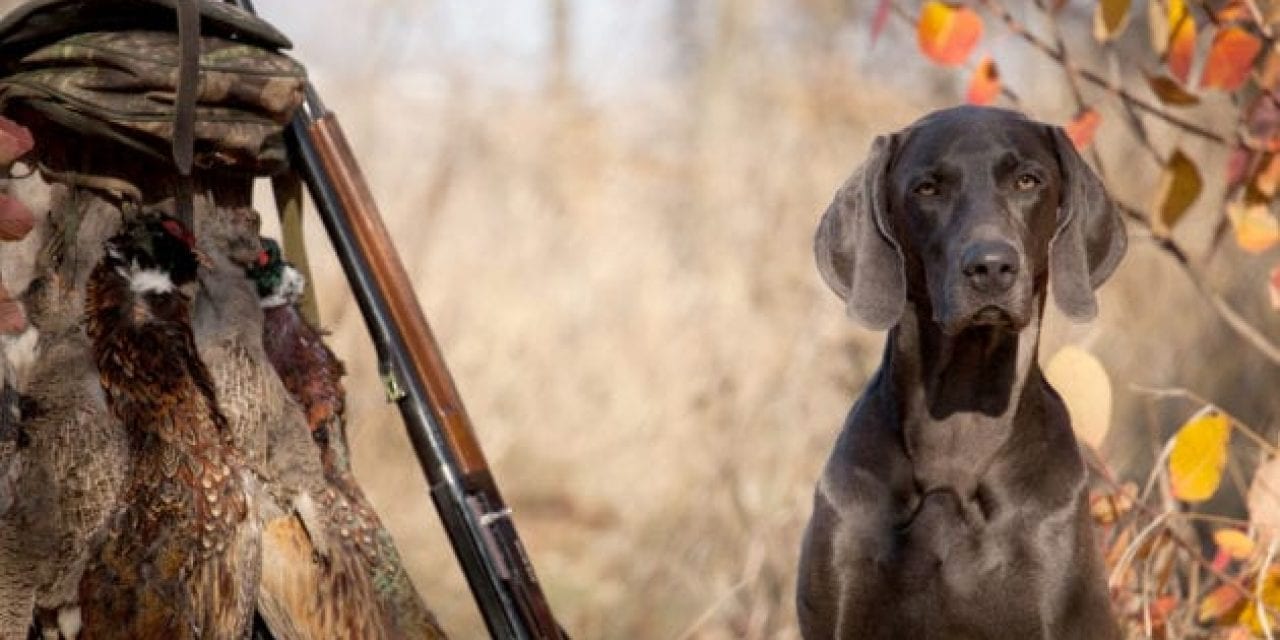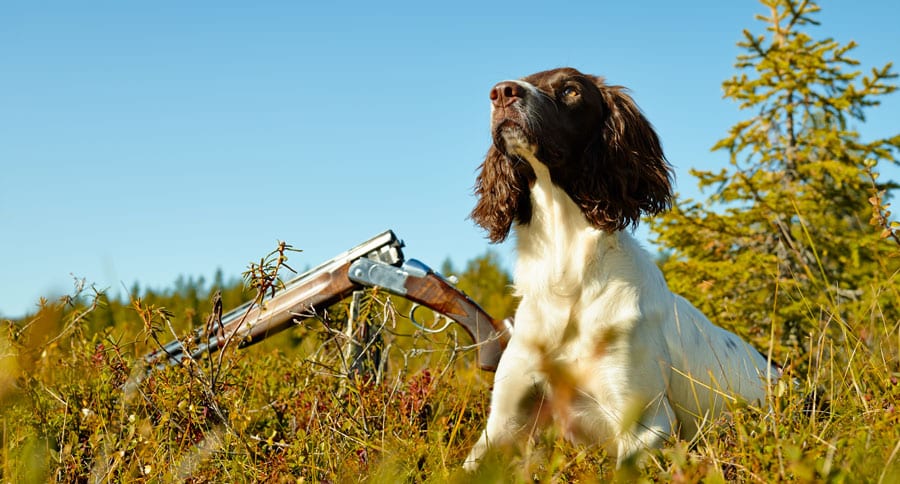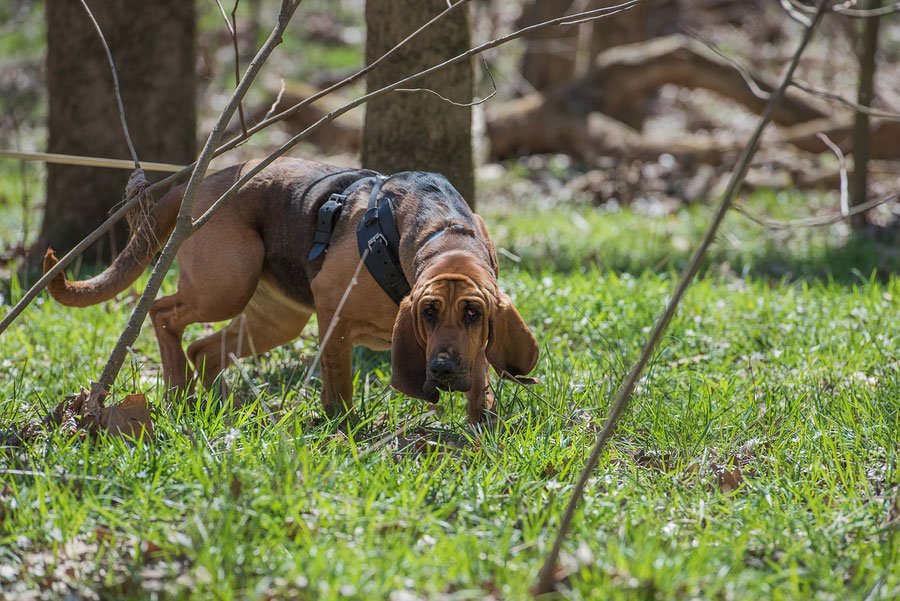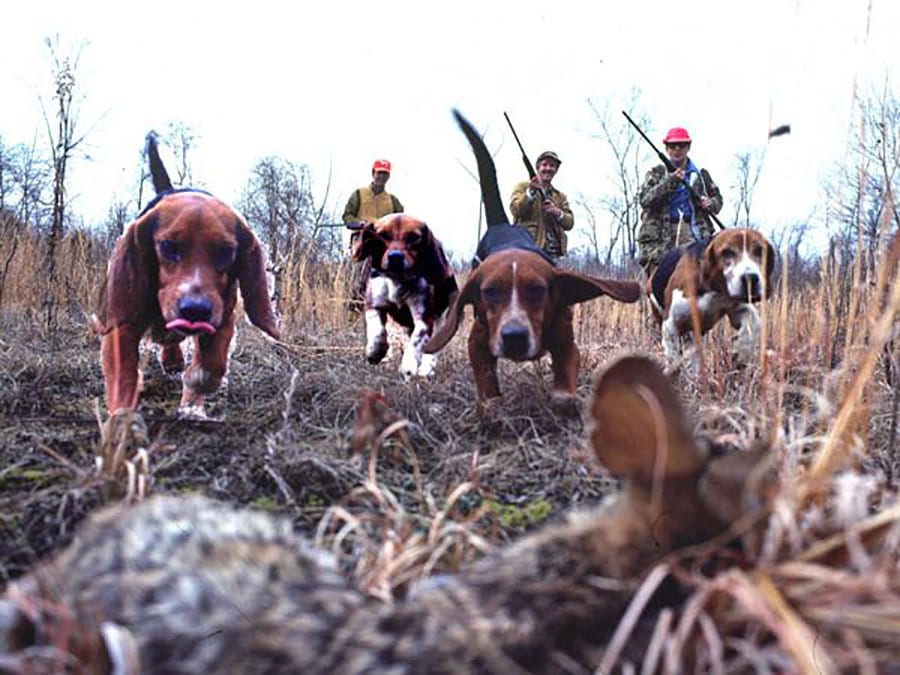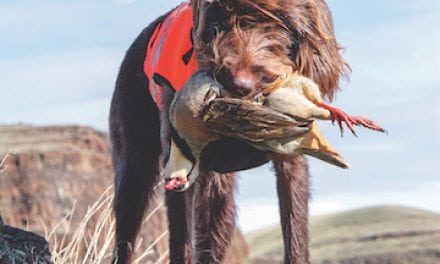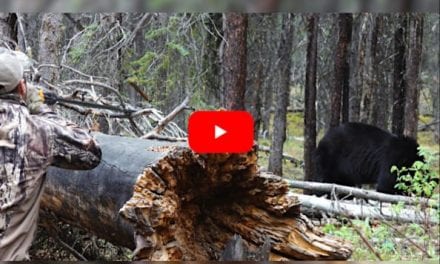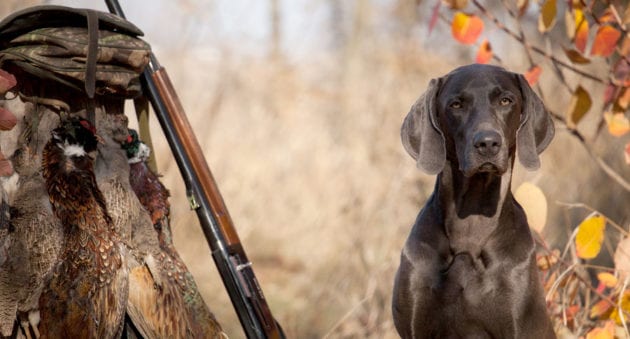
WATCH THE VIDEO NOW:
A gun dog is a product of its training, but these 20 breeds are in a class of their own.
Ranking hunting dog breeds is really an impossible task, as each is so unique.
Every hunting breed has an area in which it excels, and typically some kind of weakness or drawback to go along with it. The key is finding a breed that best meets your specific needs, rather than trying to force a dog to be something it’s not.
You could categorize sporting breeds a number of different ways, but I think they really fall into four distinct groups: pointers, retrievers, flushers and hounds.
Humans have hunted over far more than 20 breeds, but these dogs have seemingly been the most iconic throughout history.
Success typically translates to popularity, too, so a breed’s reputation should certainly carry some weight.
Which breed suits you?
The Pointers
These are your upland heroes. All gun dogs are exceptionally cognitive creatures, but the pointing breeds are easily the most methodical. While retrievers and hounds have a process by which they work, it’s safe to say no other gun dogs actually do as much as pointers.
However, whether you’re training a dog for hunting or field trials, you should know what kind of time commitment you’re signing yourself up for.
To get the most out of a pointer, you’ll need to train it to recognize a bird’s scent, stay within range, point, hold and then retrieve it after your shot on the flush.
This much training requires a great deal of patience, but the reward is impossible to match. Whether you’re chasing bobwhites in South Texas or ruffed grouse in Minnesota, watching a good pointing dog in action is one of the most gratifying experiences hunting has to offer.
German Shorthaired Pointer
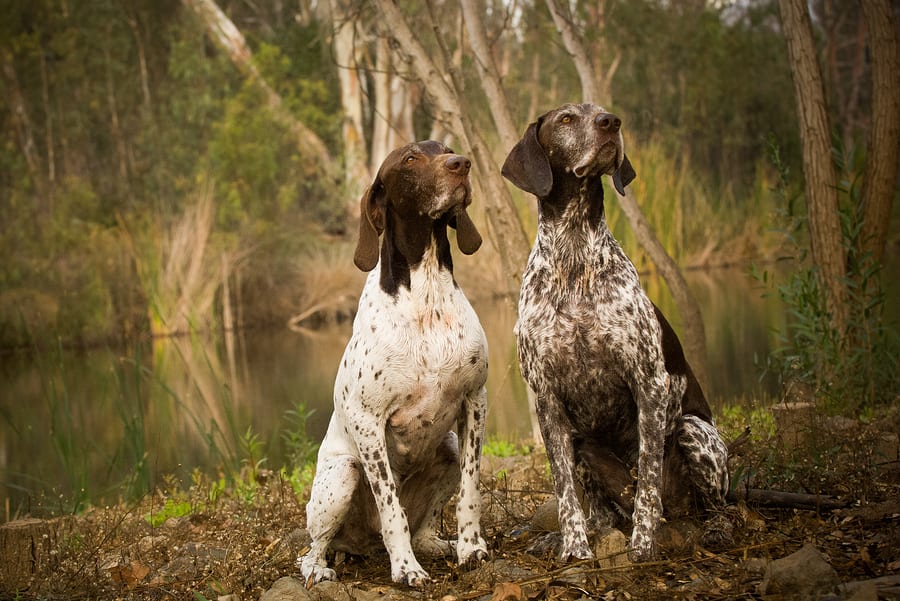
I’m not sure you could start this list off with any other dog. Not only has the German shorthaired pointer gradually become the icon for all bird hunting, but it’s also one of the only true multipurpose dogs out there. There are labs that can point and setters that’ve jumped in a marsh after a duck, but you don’t see it often.
The German shorthaired pointer, however, will truly work for any bird hunter. Its webbed feet make it an exceptional swimmer, its relentless nose will pinpoint a bird from the next state over and its stamina will keep it going as long as your own legs will hold up.
That endurance isn’t always useful, though. Of all the dogs on this list, the German shorthaired pointer easily has the most energy, making it a nightmare for those who don’t have the adequate time or space to exercise a dog.
English Setter
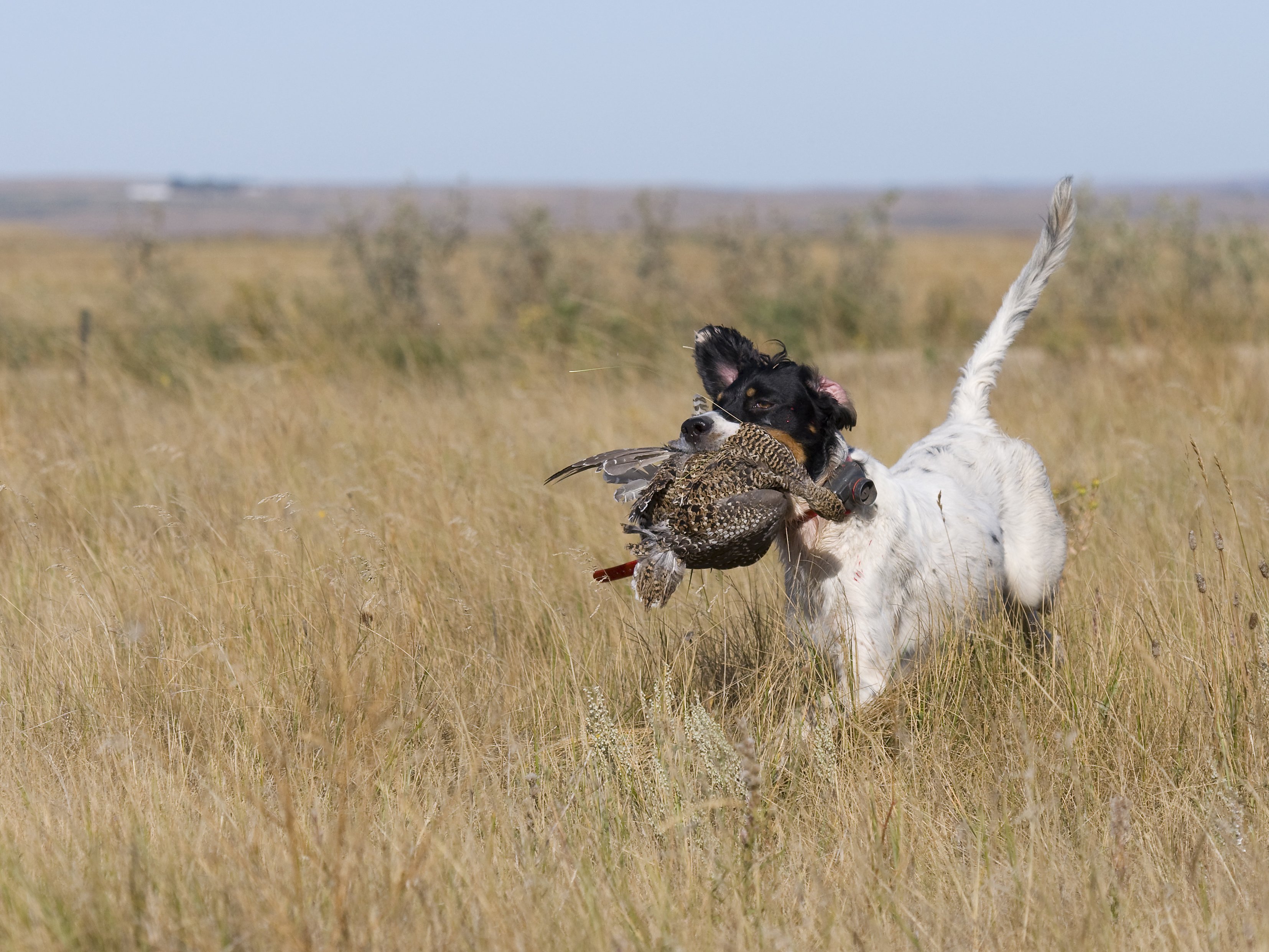
Style, elegance and legacy are the words people associate with the English setter. With quite possibly the richest history of any dog on this list, this one tends to go best with a traditional shotgun and an especially strong name.
There’s something inexplicably poetic about watching a breeze catch the feathered hair of a locked-up setter tail. And, it’s that element of grace that seemingly keeps setter owners loyal to their breed.
This is also one of the most diverse sporting breeds out there, as two English setters can look so different from each other. They can range from 40-80 pounds as adults, some with bigger heads and some with broader shoulders.
The coloration varies quite a lot, too, as some dogs will be completely white, while others will have heavy orange or black ticking and sometimes both.
However, prepare to step up your cleaning efforts, as the English setter sheds a lot of hair and has a reputation for being hard to housebreak.
Brittany Spaniel
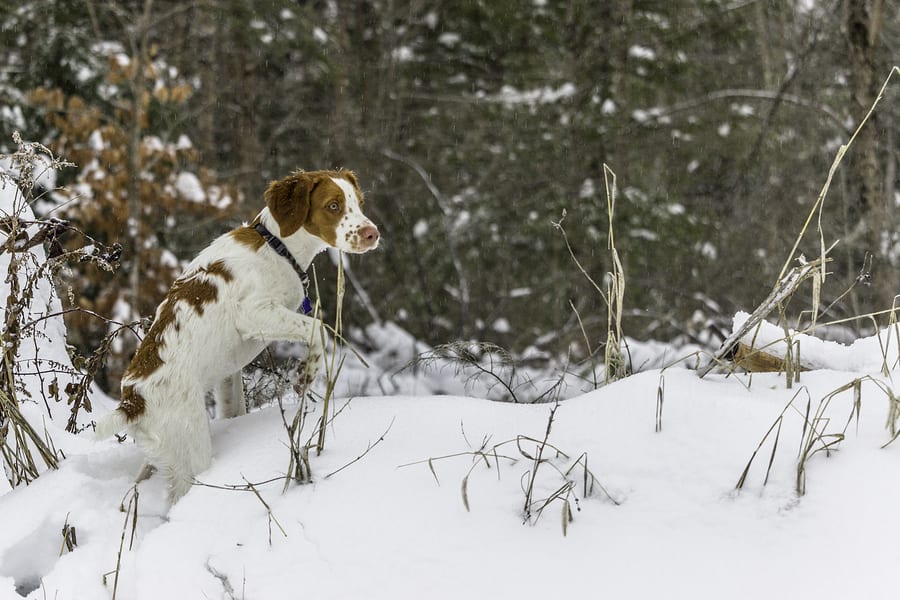
The Brittany spaniel is a special bird dog. It’s not the flashiest dog I’ve ever hunted over and it’s certainly not the biggest, but there’s just something about it.
If all the pointing breeds made up a team, the Brittany spaniel would be Rudy Ruettiger. Although it doesn’t have the physique of a German shorthaired pointer or the beauty of a setter, it has enough heart to outhunt any dog on this list.
I’ve accompanied the Brittany on a number of hunts, and repeatedly watched it outwork its peers.
Every bird hunter hopes he or she is lucky enough to find a dog with that X factor that makes it want to please its owner. And, in my experience, every Brittany is born with it.
German Wirehaired Pointer
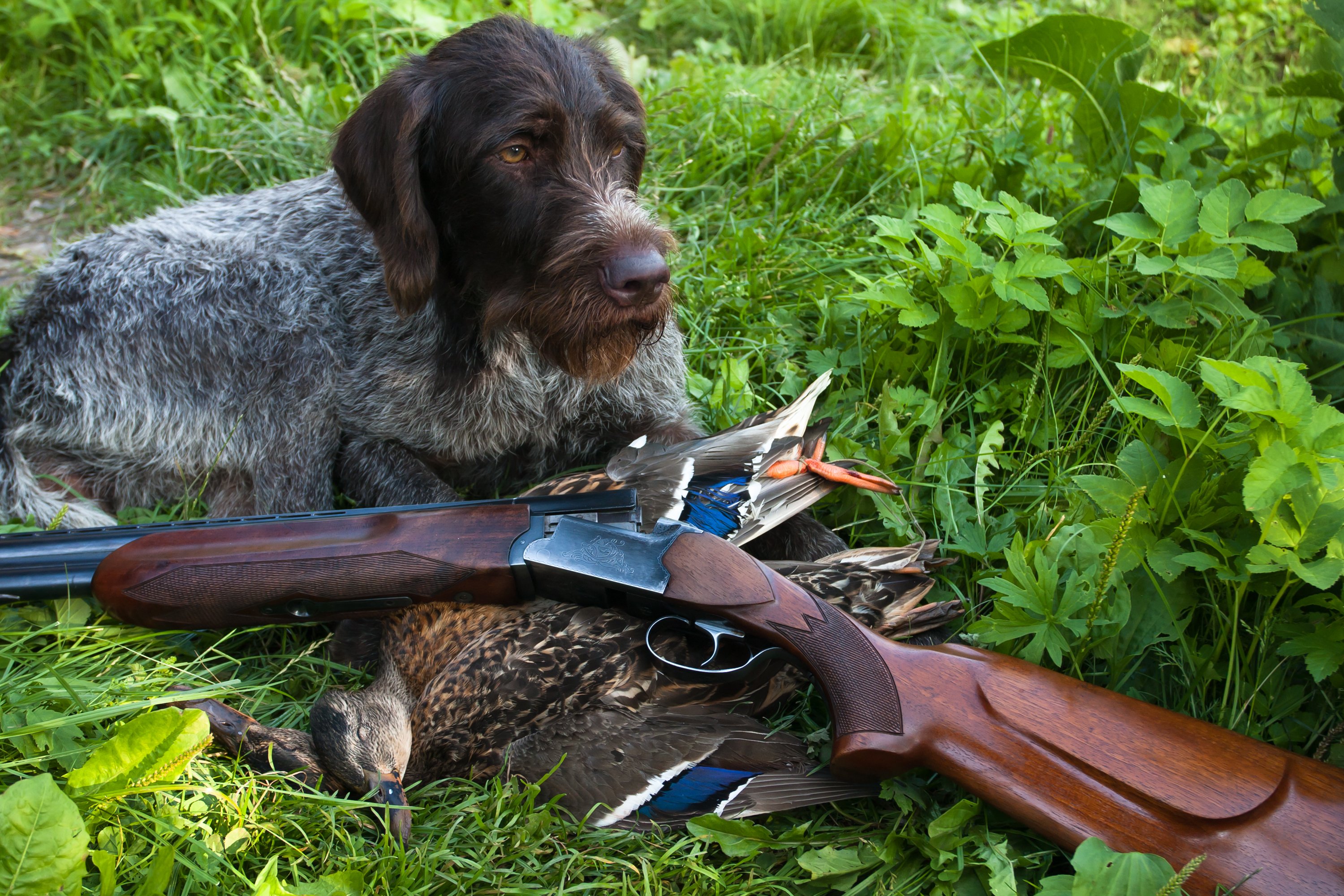
You could sum up the German wirehaired pointer in one word: tough.
Most hunting dogs are eager to go the extra mile, but usually with some limitations. Most dogs except the wirehair, that is.
This is a dog with no regard for comfort. The majority of bird hunters are familiar with the feeling of shooting a bird and watching it fall in an unfortunate place like a thicket or a freezing-cold pond. In scenarios where many dogs will draw the line, the German wirehaired pointer excitedly accepts the challenge.
A German descendent of the griffon, the German shorthaired pointer, the Pudelpointer and the Deutscher Stichelhaar, this breed also meets the needs of both upland and waterfowl hunters.
Vizsla
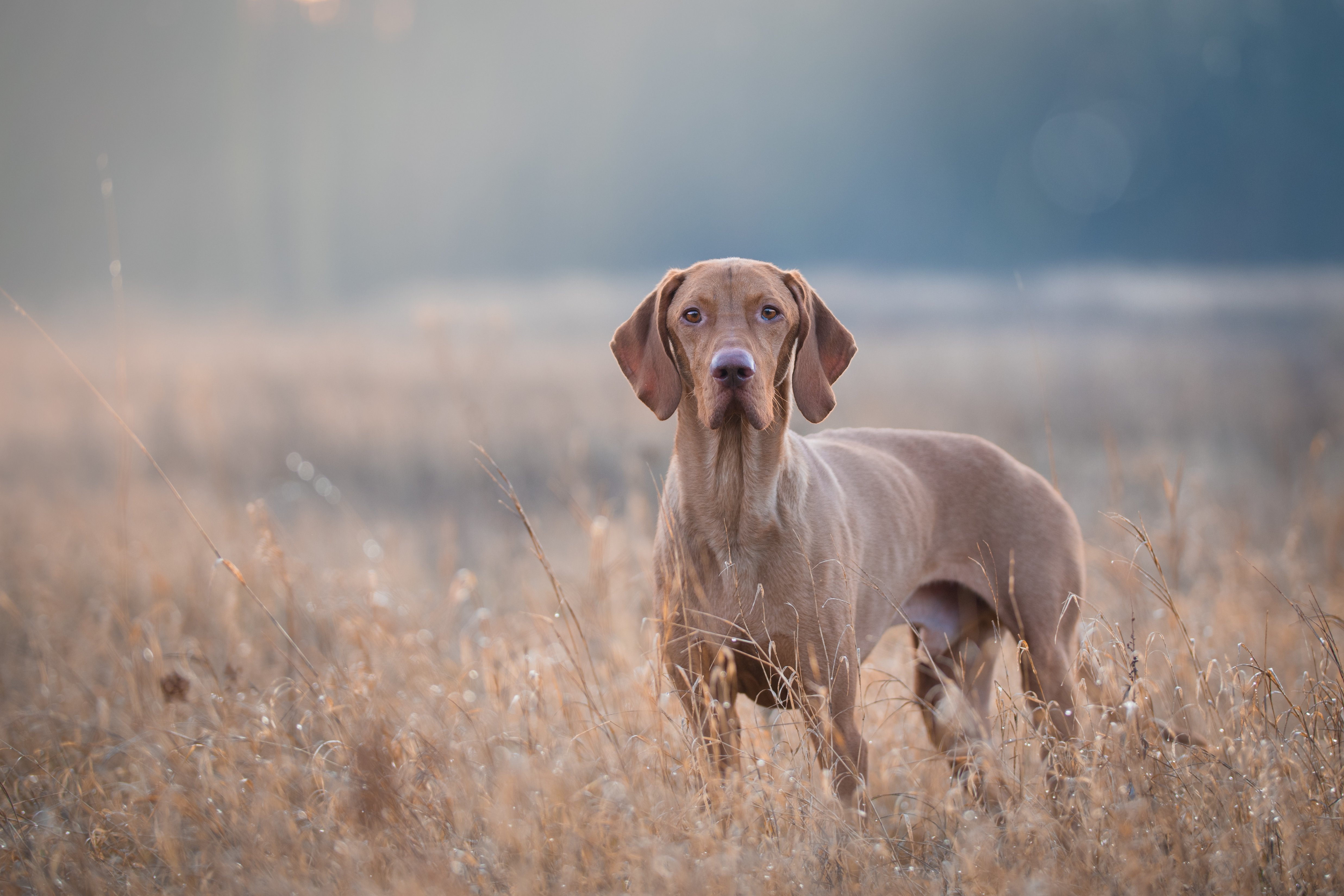
Hailing from Hungary, the vizsla is another that can do it all. While it’s made its name in pursuit of upland birds, a well-trained vizsla can outperform a great Labrador retriever in the swamps.
The key to getting the most out of a vizsla, though, is the proper communication. This is one dog that’s notorious for being sensitive, which can create fluid communication or build an unbreakable wall.
The Hungarian hunter is known for taking harsh discipline very poorly, so gentle commands and positive reinforcement are imperative.
The vizsla isn’t particularly big, which is often appealing to those looking for a family dog to have in the house. However, it has just as much energy as a German shorthair or wirehair. So needless to say, exercise is a must.
English Pointer
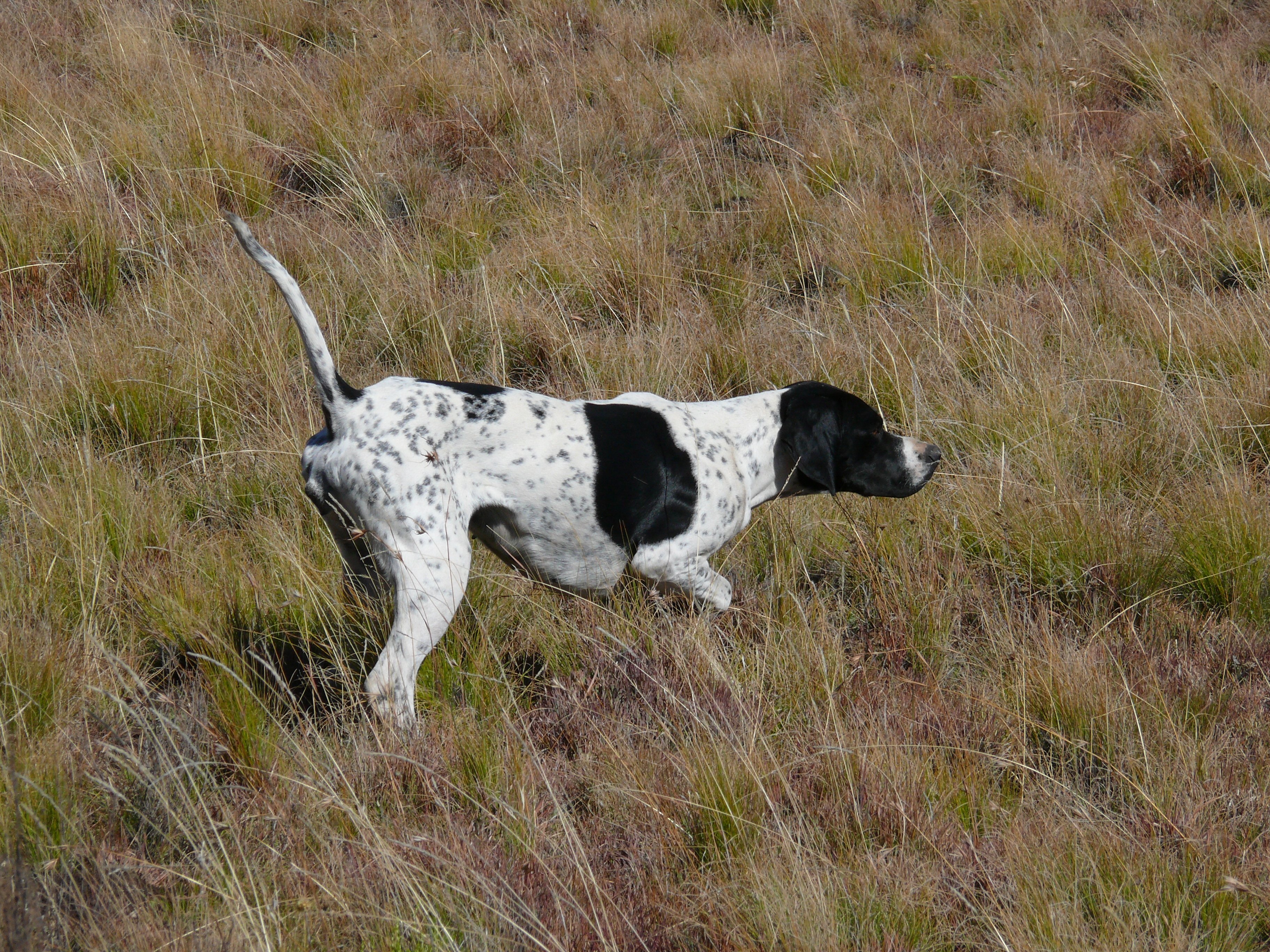
Hunting over an English pointer isn’t for the faint of heart.
I shot my first bobwhite over an English pointer, or simply “pointer” as folks down here in Texas call them. It didn’t come easy, though.
As an inexperienced bird hunter at the time, I wasn’t sure how to hunt over a dog, so I tried to just follow her lead more or less. Little did I know, a group of experienced jockeys had just thrown me on a racehorse and hoped I could hold on.
While the pointer has an unbelievable drive that should really be reserved for the most experienced of riders, it’s a natural phenomenon with the right man behind the reins.
Weimaraner
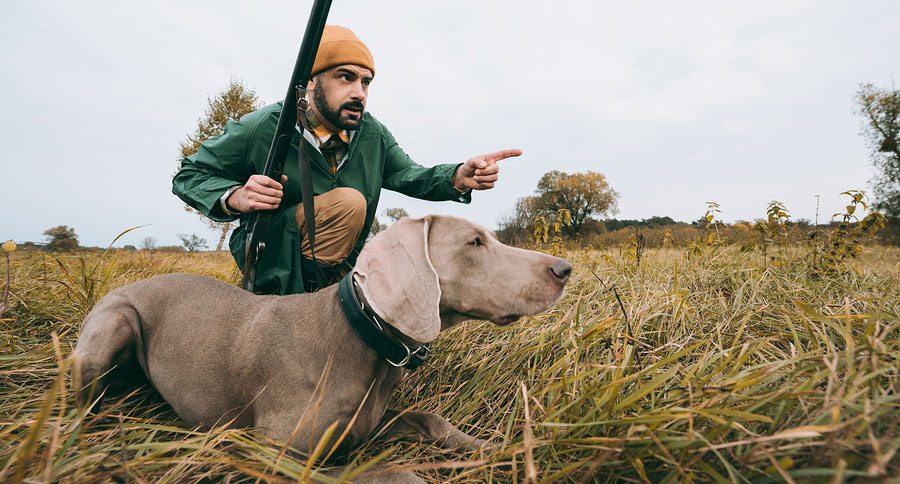
Sometimes growing up to 90 pounds, the Weimaraner is one of the biggest sporting breeds with an instinct to point. What’s so impressive about this particular breed, though, is its versatility.
It would be an injustice to the European-native to not include it with the pointers, as it’s earned its stripes as an upland partner. However, almost any hunter can find a use for one, as it’s proven to essentially be the Swiss Army knife of all gun dogs.
The Weimaraner can add an edge when hunting for upland game birds, waterfowl, squirrels, rabbits, foxes, deer, bears, hogs and various predators.
As far as personality goes, though, the Weimaraner is a high-energy breed that bonds very closely with its owner. So if you’re one who has to leave your dog at home for long periods of time, expect to encounter some separation anxiety.
French Spaniel
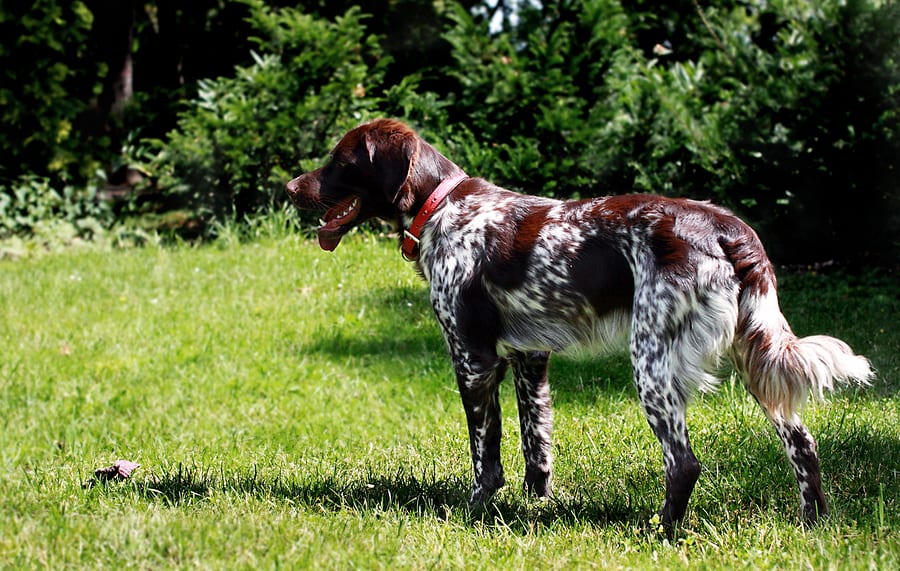
The American Kennel Club and The Kennel Club (UK) don’t formally recognize the French Spaniel as a breed, but the Canadian and international kennel clubs do.
Unsurprisingly originating in France, this dog was the undisputed favorite of French royalty during the Middle Ages.
However, near the turn of the 20th century, French spaniels narrowly escaped extinction, thanks to French priest Father Fournier’s committed efforts to preserve what was left of the breed. Somehow this unique setter-like spaniel is still around today, and has become increasingly more popular in Canada for hunting grouse and woodcock since its introduction in the 1970s.
Any upland hunter who owns one will swear by it, although you won’t come across one all that often.
It’s the French spaniel’s resilience as a breed that earns it a spot on this list.
Irish Setter
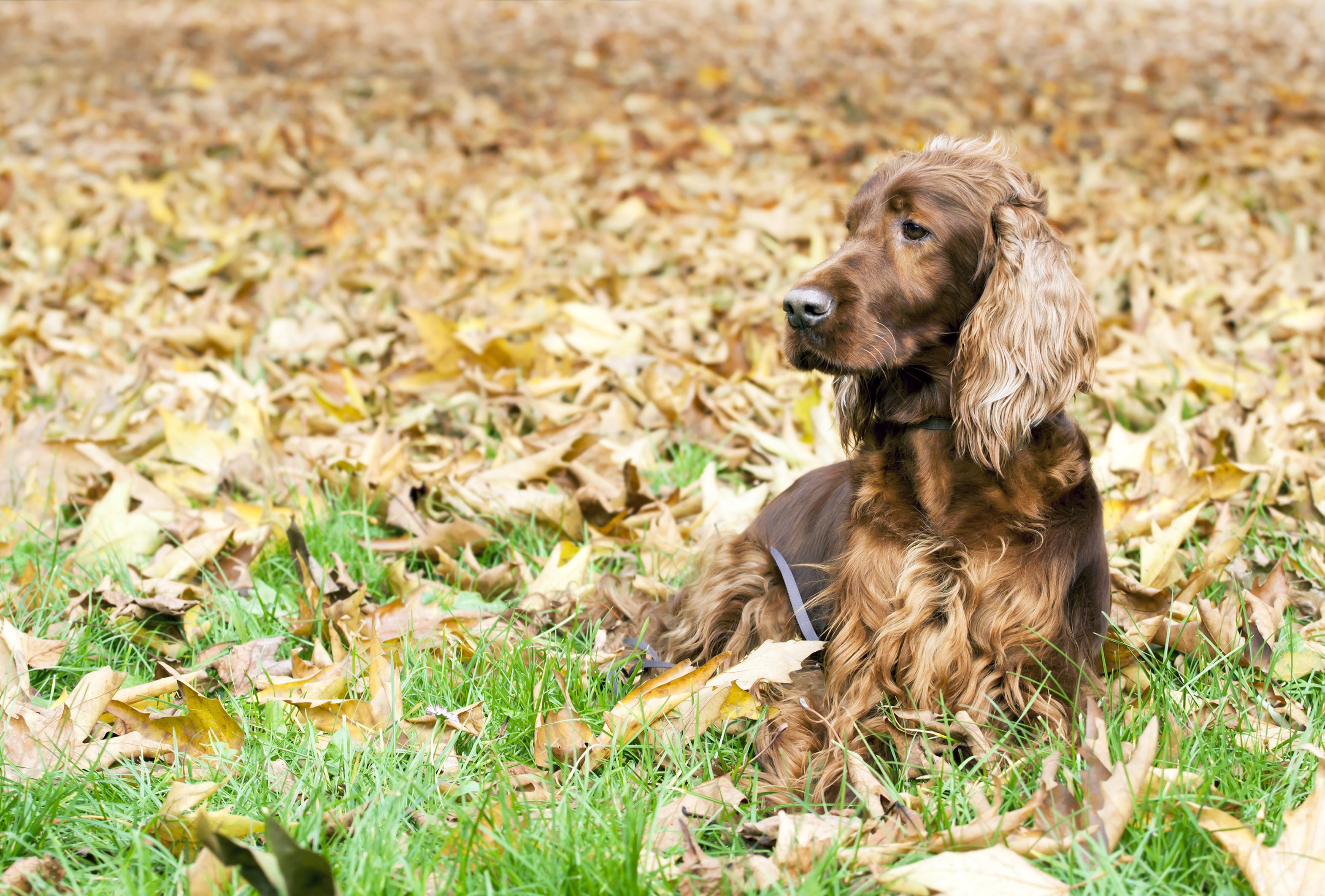
There’s one thing no one can deny when it comes to the Irish setter, and that’s its beauty. One of the most beautiful dogs any hunter could ever hunt over, the red dog is simply hard to look away from.
However, there are conflicting opinions surrounding the dog’s ability to hunt, as well as the distinction between an Irish setter and a red setter.
While this setter has shown it can certainly hunt, its reputation is surely a reflection of some inconsistency. However, plenty have proven they can keep up with English setters and often even steal the show.
While some hunters will point to the separation between Irish and red breeds, there’s really only one kind of dog. The only difference is The American Kennel Club recognizes the Irish setter as a breed, while the Field Dog Stud Book recognizes the red setter.
The Retrievers
These are most often your waterfowl ride-or-dies. While plenty of duck hunters will go without a dog, most believe the implementation of a dog is half the experience.
There are hunters here and there who swear by retrievers for chasing upland birds, but no one will argue with the notion that they rule the marsh.
The dog training isn’t quite as rigorous as that of a pointer, but it definitely isn’t a walk in the park. Like any gun dog, the key to molding a great hunting partner is putting in the time. Training a dog to sit for hours at a time isn’t going to come easy. But when it finally does yield results, the payoff is as sweet as any.
Additionally, many retrievers have developed a reputation as some of the best house dogs over the years. Not only are the dogs in this segment some of the most loyal hunting partners you could ever hope to have, but each will make for a particularly loving addition to your family.
As mentioned, there are other breeds that can play the retriever role, such as the German shorthaired pointer, the German wirehaired pointer, the vizsla, the Weimaraner and the cocker spaniel. But, these three breeds set the standard.
Labrador Retriever
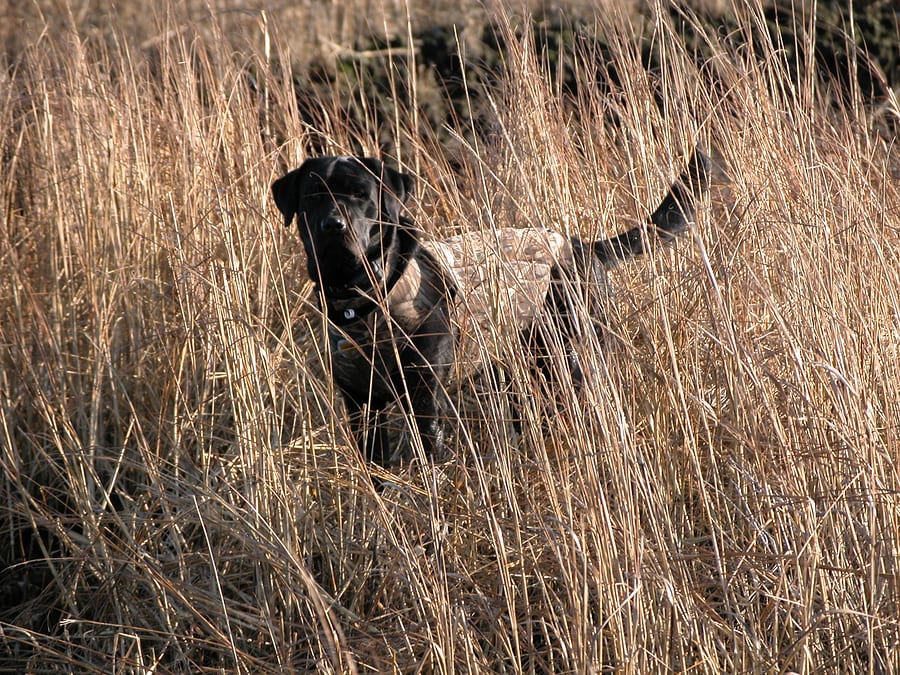
Simply put, the Labrador retriever is the face of duck hunting, and rightfully so.
Not only is the Labrador an exceptionally strong swimmer, but also it feeds off an especially strong drive to please. Any bird hunter will tell you the chemistry between a hunter and his or her dog is what leads to bag limits. And, that chemistry is instinctual for a Labrador.
While this particular breed has become one of the most popular in the United States for non-hunters, too, line breeding is as popular with labs as it is with any upland breed.
Your typical household might look at a lab and only see its friendly face and big body, but a seasoned duck hunter sees a venerable athlete ready to work.
The Labrador isn’t limited to ducks, either. This gun dog will perform at an elite level in any waterfowl setting, and has also become the go-to retriever for dove hunters.
Chesapeake Bay Retriever
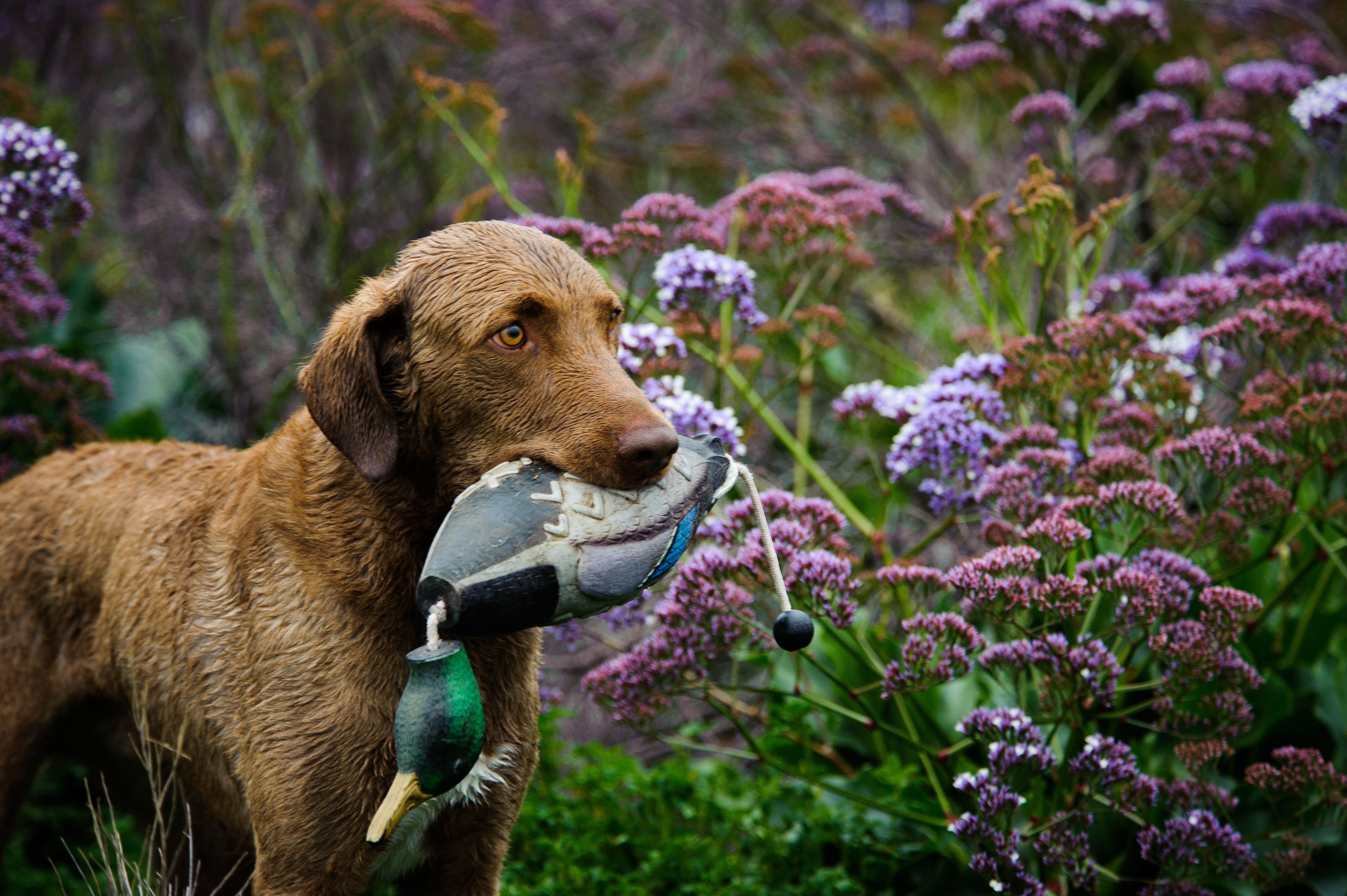
Scrappy as hell.
The Chesapeake Bay retriever is a large dog, but it hunts like an underdog. It looks similar to a lab, which is perhaps why it seems to have a chip on its shoulder.
The “Chessie” has always retrieved like it has something to prove, which only benefits hunters–especially duck hunters. A Chessie will jump into any water, regardless of whether it’s warm, cold or iced-over.
It undoubtedly comes packed with more energy than a lab, which can be a lot when you aren’t sitting in a blind. But, that energy will power a Chessie through any elements, making it a dependable gun dog you can always count on.
The Maryland state dog also has an eyebrow-raising background, as its story started with two pups that were pulled from a sinking ship in Maryland all the way back in 1807. Thought to be descendants of Newfoundland dogs, each was bred with Irish water spaniels and various hounds.
For many years, these dogs were classified as one of three types of “Chesapeake Bay ducking dogs.”
Maryland hunters wanted to engineer a gun dog that could handle the often-rough conditions of local duck hunting. The Chesapeake Bay is seated right along the Atlantic Flyway, making it a honey hole for serious duck hunters. The drawback, however, was frigid waters paired with icy winds. And, somehow they found a dog that accepted the elements as a challenge.
In 1918, the American Kennel Club finally recognized one, single breed, which was the Chesapeake Bay retriever.
Golden Retriever
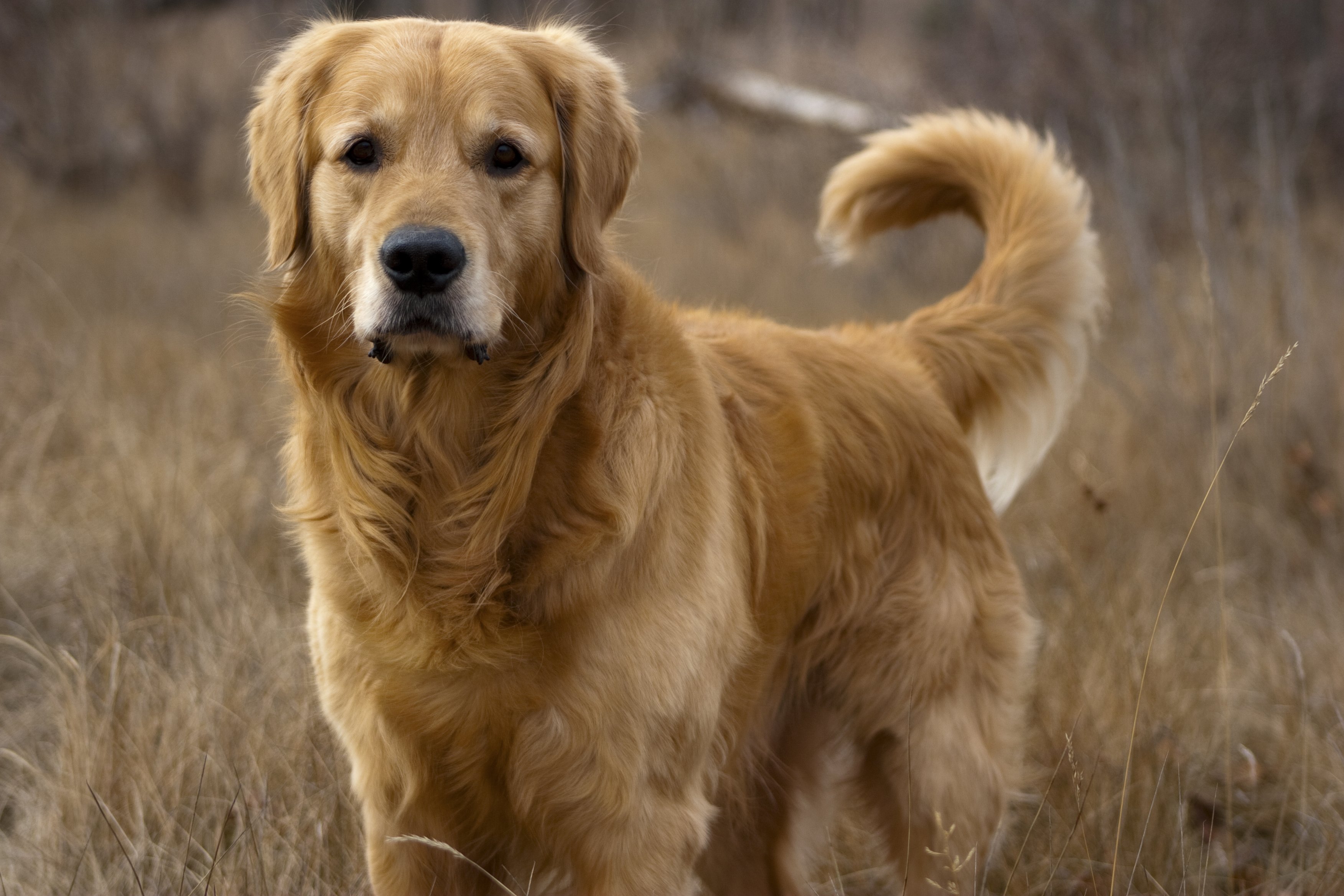
Who doesn’t love the golden retriever? It’s basically America’s dog at this point, isn’t it?
One of the friendliest dog breeds you’ll ever encounter, the golden retriever is everything you’d ever want in a family dog. It maintains a manageable amount of energy, which typically fades after a couple years, making it fancy the couch more than your typical gun dog will.
Similar to the Irish setter, it’s sometimes hard to fathom the idea of a dog so majestic keeping up with the likes of a barking kennel dog. However, any hunter who owns a golden will tell you an unmatched sense of smell sets his or her breed apart from any other.
The glamorous, yet rugged model has also become surprisingly popular among upland hunters for its supreme ability to track down fallen birds. But, its roots are submerged in the water, as its reputation as a revered duck dog is already set it stone. So, don’t be too quick to throw any labels on this stately hunter.
The Flushers
Most of the breeds that fall under this category are on the smaller side of the gun dog spectrum, but each brings a ton of personality to go along with its unique bird hunting technique.
Also popular among upland hunters, flushers can serve a number of purposes. Unlike pointers, flushers typically work to push a bird rather than stalk it. So instead of finding the bird, pointing and holding, a flusher will run around the other side of it and force it toward the hunter.
Many hunters prefer to have both a pointer and a flusher, as the two can compliment each other with proper training. When a pointer locks up on a bird, a well-trained flusher will push the bird so the hunter doesn’t have to.
Additionally, the following breeds also have a strong reputation in the waterfowl community, as many duck hunters even prefer a strong-swimming spaniel to a Labrador retriever.
However, flushing is where these dogs truly stake their claim in the Gun Dog Hall of Fame.
Cocker Spaniel
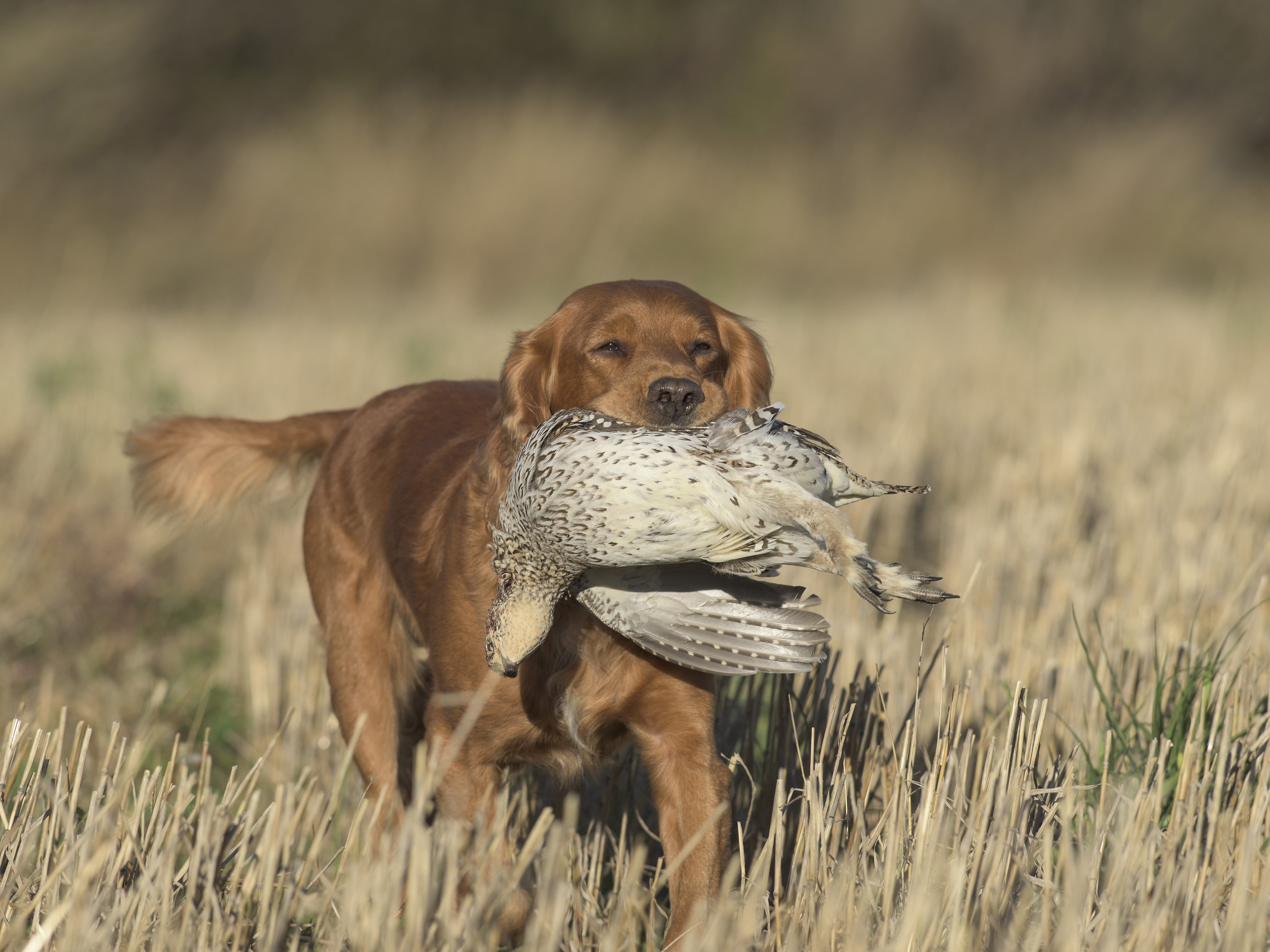
There are two distinct cocker spaniel breeds–the American cocker spaniel and the English cocker spaniel–which just about every cocker owner will specify. However, their shared name, “cocker,” comes from the cocker spaniel’s storied role in woodcock hunting.
Just about every bird hunter you meet is loyal to a breed, but none more than the owner of a cocker spaniel. It seems this breed, while not as popular as any of your blue-blood pointers, has sustained a cult-like following that won’t hunt without a trusty flusher.
The cocker spaniel (both American and English) is a hardworking, loyal gun dog that won’t stop until its respective gunner can’t walk anymore. It features a relentless drive and a stellar nose for tracking down fallen birds.
Plus, its size and temperament make it a fantastic family pet.
English Springer Spaniel
The English springer spaniel is an iconic breed in general, but particularly for the flushing group. The term “springer” actually comes from the act of flushing or “springing” a bird from cover.
This breed has undoubtedly made a name for itself among uplanders, boasting exceptional consistency in both quartering and retrieving. However, the springer’s affectionate personality is often what steals hunters’ hearts.
It can also range quite a bit in size, as some won’t be more than 20 pounds, and others will push 60. But usually between 40 and 50 pounds, it sits at a nice, medium size, making it a great family pet.
Its impressive nose and strong drive haven’t only paid dividends in the field, but also in the public service industry, as the springer often also serves as a rescue dog in rougher terrain.
Boykin Spaniel
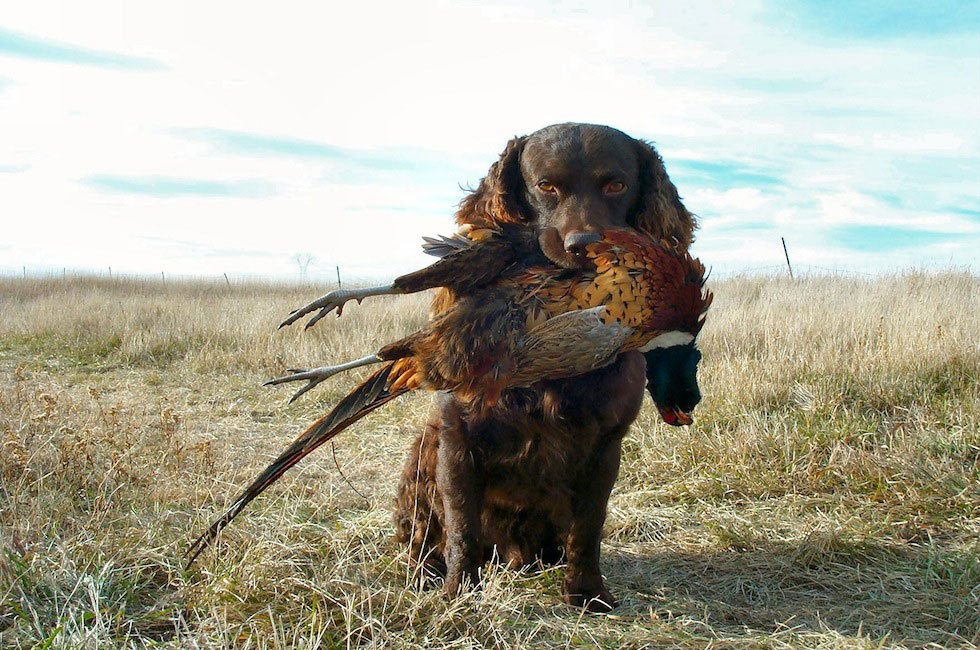
The dual-purpose Boykin is not only a fabulous upland hunter, but a favorite among waterfowl hunters, too.
This shouldn’t come as a surprise if you’re at all familiar with its lineage, as it descends from the Chesapeake Bay retriever, the springer spaniel, the cocker spaniel, the American water spaniel and several pointing breeds.
The Boykin is an unbelievable swimmer and a perfectionist in the field.
Many upland hunters believe their Boykin has the ability to point, but they’re actually seeing what some call a “hesitated flush.” This gun dog won’t flush a bird until it’s absolutely positive of where it is, which is invaluable for upland hunters.
The Hounds
This group is stands apart from the rest of the sporting breeds. There are a number of reasons they’re so different, starting with the quarry they’re employed to hunt. The majority of gun dogs out there hunt various game birds, whereas hounds hunt four-legged critters, such as deer, squirrels and rabbits.
When training a dog to hunt birds–upland or waterfowl–the primary focus is discipline. Hounds are different in this way, too.
The only discipline a hound needs to live by is the self-control to stay on a scent trail. That restraint comes pretty easily for hounds, too, as these driven dogs will chase and bark until it’s pitch-black outside and you’re tracking them down in a truck.
Strategies can vary when using hounds, as hunters chasing rabbits and deer prefer dogs that’ll circle around and push animals past them. Squirrel and bear hunters, on the other hand, train their hounds to tree or corner animals for shot opportunities.
Regardless of what you’re after, though, the more ruckus a hound makes, the better.
Bloodhound
The bloodhound is the largest of the scent-tracking dogs on this list, and also boasts one of the most impressive resumes. Not only has the bloodhound proven its abilities in terms of hunting, but also law enforcement and search and rescue.
Generally weighing 85-120 pounds, this dog moves like a 2-year-old beagle. With a drive as strong as any gun dog out there, the bloodhound will stop at nothing to find the end of a scent trail, which can be as much of a resource as it can a liability.
Relative to brain size, dogs have an olfactory bulb 40 times the size of that in humans, with anywhere between 125 million and 220 million olfactory receptors. This essentially means all dogs’ sense of smell is at least 40 times stronger than ours. The bloodhound’s sense, though, boasts up to 300 million receptors, enabling it to pick up on a trail that’s several days old.
While its nose seems almost as untamable as the drool it’ll launch across a room, it most definitely can be done. With the proper training, a bloodhound can push more deer than any gun dog out there.
The bloodhound’s legacy speaks for itself, too, as it’s tracked deer, wild boar, escaped prisoners and missing people since the 14th century.
Coonhound
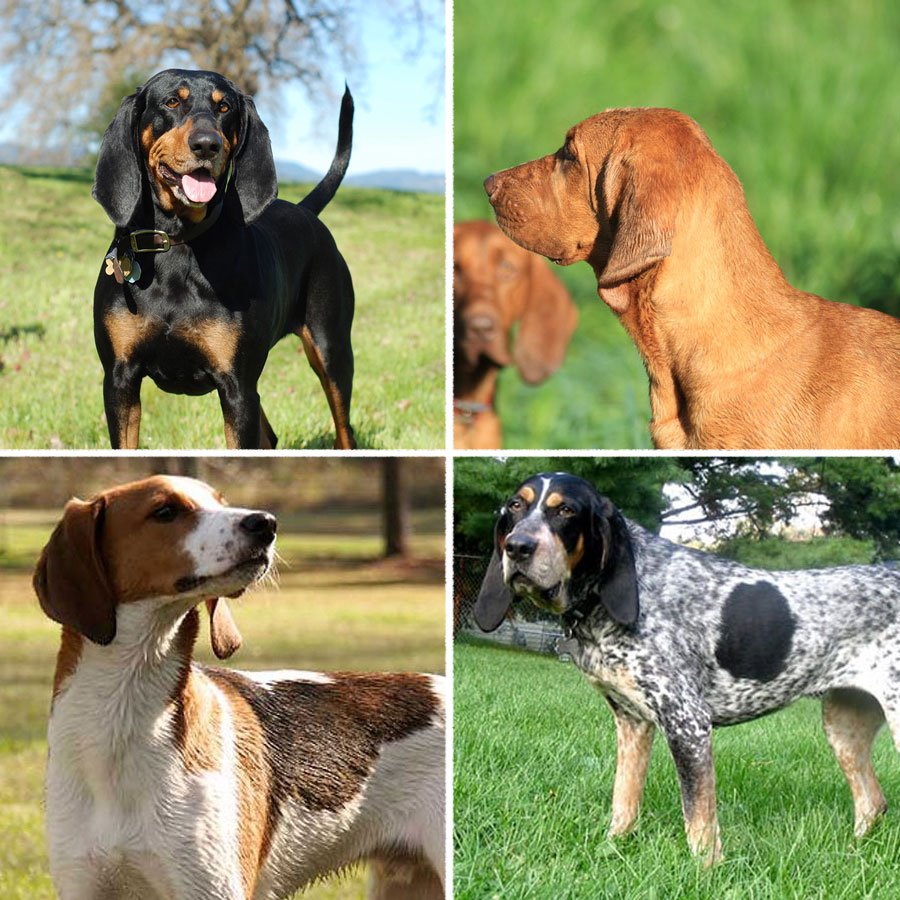
For the sake of keeping this list at an even 20, I decided not to give all six breeds individual segments. However, every coonhound breed, each descending from various lines of foxhounds and bloodhounds, has made a name for itself in the field, specializing in the ability to tree an animal and still hold a scent.
Black and Tan Coonhound: Weighing 40-77 pounds, this breed features colors and markings that resemble those of a Doberman and a Rottweiler, and descends from the bloodhound and the black and tan Virginia foxhound. Registered as a breed in 1900, the black and tan coonhound was the first of the six coonhound breeds. While its bread and butter is chasing raccoons, it’s more than adequate hunting deer, bears and other predators.
Redbone Coonhound: Commonly recognized from the novel “Where the Red Fern Grows,” this coonhound descends from the English foxhound, the Welsh hound, the harrier, the beagle, the Grand Bleu de Gascogne and the bloodhound. Known for its stamina, the redbone will run as hard and bark as loud as any hound out there, and typically excels when working within a pack.
English Coonhound: The third coonhound species to be recognized varies the most in color, displaying both redtick and bluetick markings. The UKC registered the English coonhound in 1905, and later separated the treeing walker coonhound and the bluetick coonhound as their own breeds. While the English can tree a bear or a cougar, too, it’s become debatably the most popular of the six for hunting raccoons.
Treeing Walker Coonhound: Possibly the most docile of the six, the treeing walker radiates a mellow attitude that also makes it a wonderful house pet. It can tree any animal, but it’s gradually become a favorite of deer hunters who can legally hunt with dogs. The treeing walker’s speed is tough to match, and hunters have taken notice.
Bluetick Coonhound: The bluetick presents a unique beauty with its overwhelming mix of colors and markings. While it can hang with any other coonhound breed, it tends to offer a more gentle, trainable temperament. The bluetick doesn’t reserve its excellent nose for one animal, either. It’ll chase any scent it comes across and will tree or corner just about any animal. For that reason, it’s probably best to avoid interactions with cats.
Plott Hound: Defined by its grittiness and determination to finish any job, the Plott is likely the most underrated gun dog on this entire list. The North Carolina state dog has proven itself as the ultimate bear hunting dog with its ability to tree a bear and fearlessly hold its ground.
Beagle
Not only is the beagle an American classic, but it’s the undisputed king of rabbit hunting. Sure, coonhounds and foxhounds can get the job done when it comes to treeing animals, but no other dog can stay in hot pursuit of a bolting rabbit and strategically drive it all the way back to you.
The beagle works exceptionally well with reinforcements, as a pack will hold much tighter to a trail than one running solo.
Its nose is up there with the bloodhound’s, too. Back in the 1950s, a study tested different dogs’ scenting abilities by randomly placing a mouse in a 1-acre field and letting the dogs loose. Fox terriers took over 15 minutes to locate the mouse, and many other breeds didn’t find it at all. The beagles in the study found it in less than a minute.
Loyal and driven to please its owner, the beagle has become of the most popular house pets in terms of hunting breeds, and for good reason. They’re typically very well-behaved and no more than 25 pounds.
American Foxhound
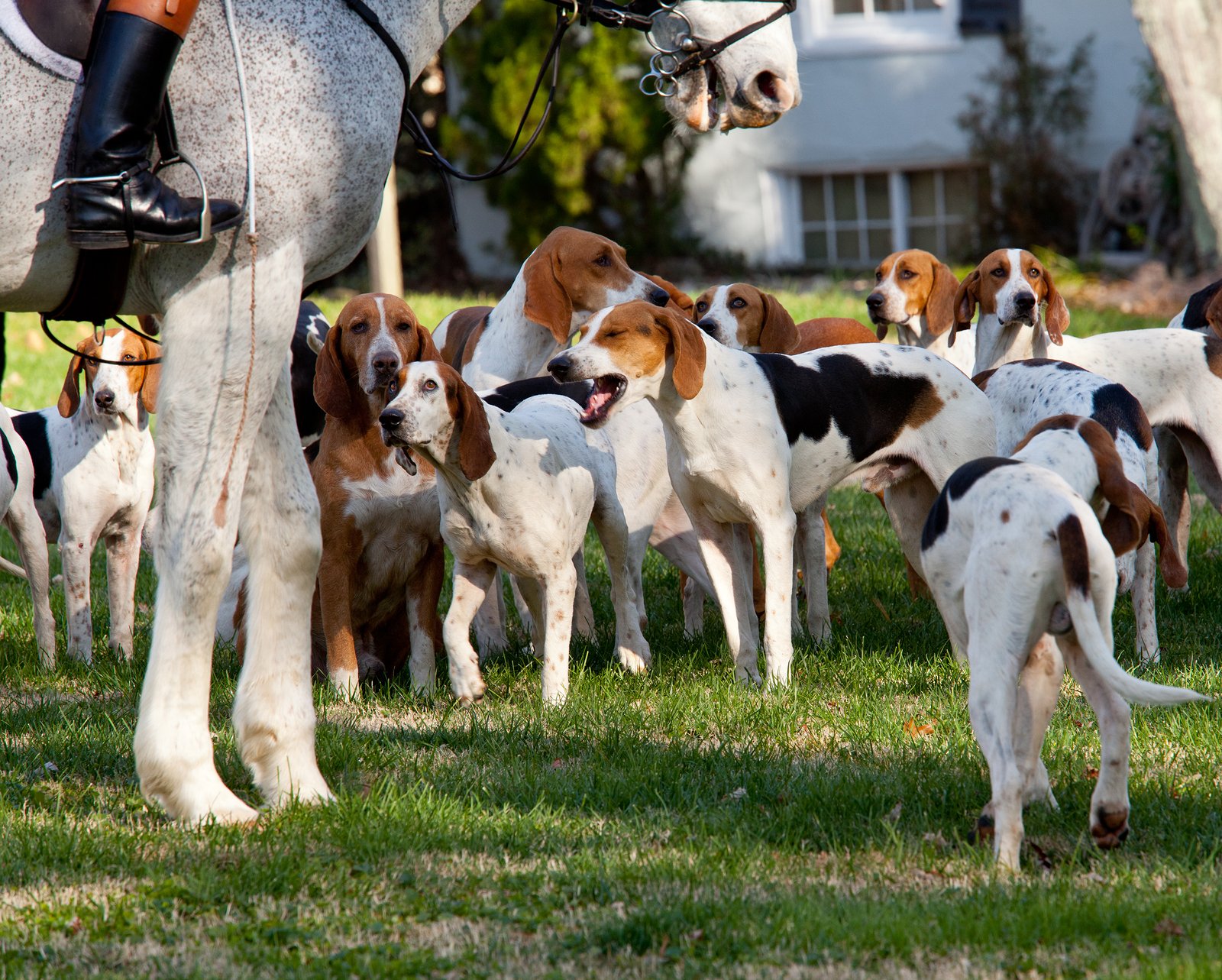
The American foxhound is one of a kind. Along with its close relative, the English foxhound, this dog carries a story of sophistication–something rarely attached to hounds.
As you might’ve guessed, they specialize in fox hunting, but they hunt with a much different style than other hounds. Not only do they work in packs, but they also meander around hunters on horseback.
Fox hunting on horseback dates back as far as 1534, and the tradition has lived on in a number of countries, including the United States.
No other gun dog has a working relationship with a second animal, and the nearly 500-year-old chemistry between foxhounds and horses is undeniable.
Foxhounds have as strong of a drive as any other hound, powered by its often-excessive level of energy.
American Pit Bull Terrier
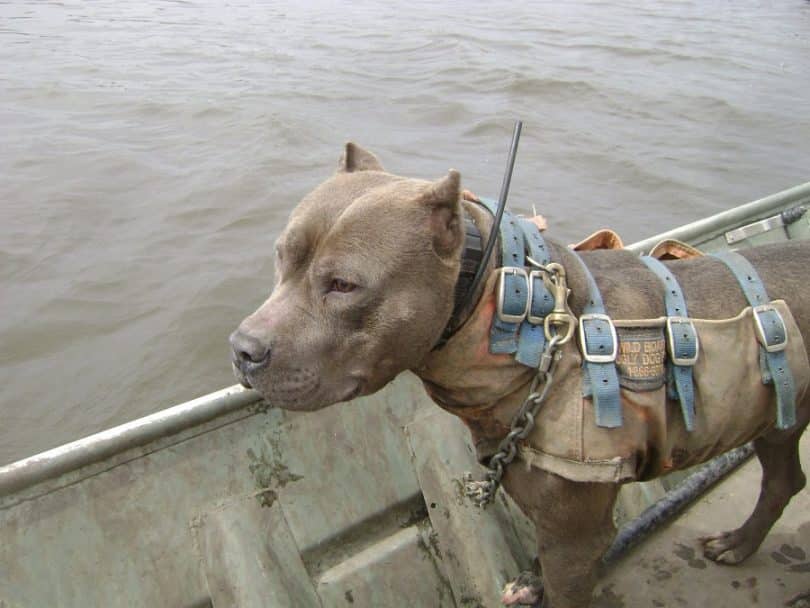
If you don’t live in hog country, you probably would’ve never guessed a pit bull could hunt. However, if you’ve ever seen one in action, you know exactly why it would make the cut for the Gun Dog Hall of Fame.
All the hounds listed above are considered “bay dogs,” meaning they corner, tree or drive an animal and then howl, or “bay,” to get a hunter’s attention. The American pit bull terrier is what hunters call a “catch dog,” which actually attacks its quarry. And, there’s none better at playing this role than the pit.
Typically sporting some kind of chest and neck armor (usually Kevlar) to protect it from a boar’s tusk, the pit will get its teeth on the bottom of a boar’s ear and hold it until a hunter comes to finish the job.
Hunting with a catch dog is brutal business, but very beneficial in terms of conservation. Feral hogs are a huge problem in the United States, and they aren’t going away. Anything helps in terms of managing populations, and when done right, hog hunting with a catch dog is very effective.
Be sure to visit walmart.com for all of your hunting needs.
NEXT: GUN DOGS: THE TROPHIES OF UPLAND HUNTING
WATCH
The post Gun Dog Hall of Fame: The 20 Best Hunting Breeds to Hit the Field appeared first on Wide Open Spaces.

